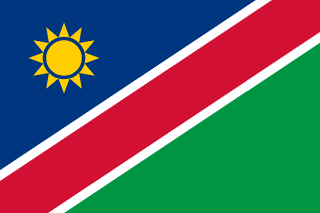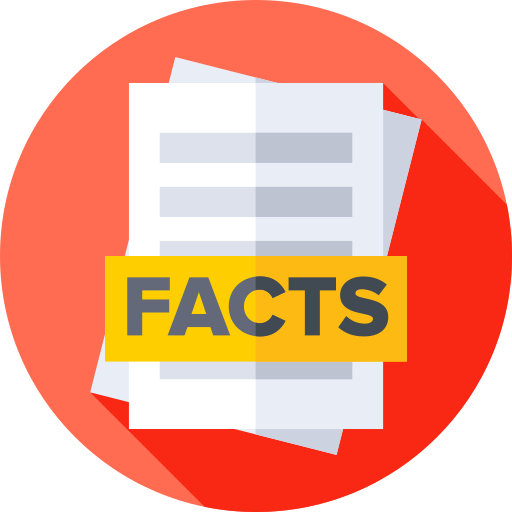Namibia - Geography

Here, let us take a look at the Geography of Namibia. The Namib Desert, after which the country is named, is considered to be the oldest desert in the world; some 14% of the land is protected, including virtually the entire Namib Desert coastal strip. Mother's mean age at first birth is 21.6 years (2013 est.) (Note: data represents median age at first birth among women 25-49), whereas, the Maternal mortality ratio is 139 deaths/100,000 live births (2023 est.)
Geographical data of Namibia
| Location | Southern Africa, bordering the South Atlantic Ocean, between Angola and South Africa |
|---|---|
| Geographic coordinates | 22 00 S, 17 00 E |
| Map references | Africa |
| Tarrain | mostly high plateau; Namib Desert along coast; Kalahari Desert in east |
| Natural Resources | diamonds, copper, uranium, gold, silver, lead, tin, lithium, cadmium, tungsten, zinc, salt, hydropower, fish |
| Natural Hazards | prolonged periods of drought |
| Irrigated Land | 80 sq km (2012) |
| Major rivers (by length in km) | Zambezi (shared with Zambia [s]), Angola, Botswana, Zimbabwe, and Mozambique [m]) - 2,740 km; Orange river mouth (shared with Lesotho [s], and South Africa) - 2,092 km; Okavango (shared with Angola [s], and Botswana [m]) - 1,600 km note: [s] after country name indicates river source; [m] after country name indicates river mouth |
| Major aquifers | Lower Kalahari-Stampriet Basin, Upper Kalahari-Cuvelai-Upper Zambezi Basin |
| Land Boundaries | 4,220 km |
| Border Countries | Angola 1,427 km; Botswana 1,544 km; South Africa 1,005 km; Zambia 244 km |
| Coastline | 1,572 km |
| Climate | desert; hot, dry; rainfall sparse and erratic |
| Area | |
| Total Area | |
| Land Area | 823,290 sq km |
| Water Area | 1,002 sq km |
| comparative Area | almost seven times the size of Pennsylvania; slightly more than half the size of Alaska |
| Maritime Claims | |
| Territorial sea | 12 nm |
| Contiguous zone | 24 nm |
| Exclusive economic zone | 200 nm |
| Elevations | |
| Highest point | Konigstein on Brandberg 2,573 m |
| Lowest point | Atlantic Ocean 0 m |
| Mean elevation | 1,141 m |
| Land Use | |
| Agricultural land | 47.1% (2023 est.) |
| Agricultural land: arable land | arable land: 1% (2023 est.) |
| Agricultural land: permanent crops | permanent crops: 0% (2023 est.) |
| Agricultural land: permanent pasture | permanent pasture: 46.2% (2023 est.) |
| Forest | 9.8% (2023 est.) |
| Other | 43.1% (2023 est.) |
Population Distribution
Population density is very low, with the largest clusters found in the extreme north-central area along the border with Angola, as shown in this population distribution map
People and Society
In Namibia, the different Ethnic groups are such that we have: Ovambo 50%, Kavangos 9%, Herero 7%, Damara 7%, mixed European and African ancestry 6.5%, European 6%, Nama 5%, Caprivian 4%, San 3%, Baster 2%, Tswana 0.5%
| Population | |
|---|---|
| Pop growth rate | 1.72% (2024 est.) |
| Birth rate | 24.3 births/1,000 population (2024 est.) |
| Death rate | 7.1 deaths/1,000 population (2024 est.) |
| Health expenditure | |
| Physicians Density | |
| Hospital bed Density | |
| Total fertility rate | 2.89 children born/woman (2024 est.) |
| Gross reproduction rate | 1.43 (2024 est.) |
| Contraceptive prevalence rate | |
| Est married women (ages 15-49) | 33.3% (2023 est.) |
| Literacy | |
| Education expenditures | |
| Net Migration rate | 0 migrant(s)/1,000 population (2024 est.) |
| Nationality | Namibian | Namibian(s) |
| Languages | Oshiwambo languages 49.7%, Nama/Damara 11%, Kavango languages 10.4%, Afrikaans 9.4%, Herero languages 9.2%, Zambezi languages 4.9%, English (official) 2.3%, other African languages 1.5%, other European languages 0.7%, other 1% (2016 est.) |
| Religions | Christian 97.5%, other 0.6% (includes Muslim, Baha'i, Jewish, Buddhist), unaffiliated 1.9% (2020 est.) |
| Age Structure | |
| 0-14 years | 34.1% (male 482,790/female 473,306) |
| 15-64 years | 62% (male 846,810/female 890,099) |
| 65 years and over | 3.9% (2024 est.) (male 47,686/female 62,969) |
| Dependency Ratios | |
| Total dependency ratio | 61.4 (2024 est.) |
| Youth dependency ratio | 55 (2024 est.) |
| Elderly dependency ratio | 6.4 (2024 est.) |
| Potential support ratio | 15.7 (2024 est.) |
| Median Age | |
| Total | 22.8 years (2024 est.) |
| Male | 22.1 years |
| Female | 23.5 years |
| Urbanization | |
| Urban population | 54.9% of total population (2023) |
| Rate of urbanization | 3.64% annual rate of change (2020-25 est.) |
| Major urban areas (Pop) | 477,000 WINDHOEK (capital) (2023). |
| Sex Ratio | |
| At birth | 1.03 male(s)/female |
| 0-14 years | 1.02 male(s)/female |
| 15-64 years | 0.95 male(s)/female |
| 65 years and over | 0.76 male(s)/female |
| Total population | 0.97 male(s)/female (2024 est.) |
| Infant Motality | |
| Total | 27.9 deaths/1,000 live births (2024 est.) |
| Male | 31 deaths/1,000 live births |
| Female | 24.7 deaths/1,000 live births |
| Life Expectancy at birth | |
| Total population | 65.9 years (2024 est.) |
| Male | 64.2 years |
| Female | 67.6 years |
| Drinking Water Sources | |
| Improved: urban | urban: 96.2% of population (2022 est.) |
| Improved: rural | rural: 73.8% of population (2022 est.) |
| Improved: total | total: 85.9% of population (2022 est.) |
| Unimproved: urban | urban: 3.8% of population (2022 est.) |
| Unimproved: rural | rural: 26.2% of population (2022 est.) |
| Unimproved: total | total: 14.1% of population (2022 est.) |
| Sanitation facility acess | |
| Improved: urban | urban: 70.6% of population (2022 est.) |
| Improved: rural | rural: 23.6% of population (2022 est.) |
| Improved: total | total: 49% of population (2022 est.) |
| Unimproved: urban | urban: 29.4% of population (2022 est.) |
| Unimproved: rural | rural: 76.4% of population (2022 est.) |
| Unimproved: total | total: 51% of population (2022 est.) |
| Alcohol consumption per capita | |
| Total | 2.38 liters of pure alcohol (2019 est.) |
| Beer | 1.37 liters of pure alcohol (2019 est.) |
| Wine | 0.16 liters of pure alcohol (2019 est.) |
| Spirits | 0.53 liters of pure alcohol (2019 est.) |
| Other alcohols | 0.32 liters of pure alcohol (2019 est.) |
| Tobacco use | |
| Total | 11.8% (2025 est.) |
| Male | 20.5% (2025 est.) |
| Female | 3.9% (2025 est.) |
Demographic profile
All Important Facts about Namibia
Want to know more about Namibia? Check all different factbooks for Namibia below.









